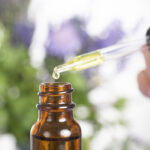Introduction: The Power of Healing Oils for Skin
Healing oils for skin have been cherished for centuries for their ability to restore, soothe, and nourish the complexion naturally. From ancient Egypt’s use of jojoba and frankincense to modern dermatological studies supporting plant-based oil benefits, these natural extracts have proven indispensable. Healing oils for skin not only hydrate but also strengthen the skin barrier, reduce inflammation, and improve elasticity, giving your skin a youthful glow without harsh chemicals.
In this article, we’ll explore 8 remarkable healing oils for skin, their unique properties, benefits, potential drawbacks, and tips for safe use.
1. Jojoba Oil: The Skin’s Natural Balancer
Jojoba oil is often regarded as the most skin-compatible oil due to its similarity to human sebum. It balances oily skin, hydrates dry patches, and helps regulate the skin’s natural moisture.
Pros:
- Non-comedogenic and suitable for all skin types
- Helps reduce acne and redness
- Long shelf life
Cons:
- May cause minor irritation in those with sensitive skin
Tip: Apply a few drops of jojoba oil nightly to maintain smooth, balanced skin.
2. Rosehip Seed Oil: The Anti-Aging Miracle
Rosehip seed oil is rich in vitamin A (retinoids) and vitamin C, making it a potent natural option for fading scars and brightening dull skin.
Pros:
- Reduces fine lines and wrinkles
- Promotes collagen production
- Light texture absorbs quickly
Cons:
- Not ideal for oily or acne-prone skin
Tip: Use rosehip seed oil as part of your evening routine before moisturizer.
3. Argan Oil: The Moroccan Beauty Secret

Known as “liquid gold,” argan oil is one of the most popular healing oils for skin due to its high vitamin E and fatty acid content.
Pros:
- Deeply moisturizes and improves elasticity
- Soothes eczema and inflammation
- Adds a subtle glow
Cons:
- Can be too heavy for very oily skin
Tip: Mix a drop of argan oil with your foundation for a dewy finish.
4. Tea Tree Oil: The Natural Antiseptic
Tea tree oil is one of the most potent healing oils for skin thanks to its antibacterial, antifungal, and antiviral properties. It is especially effective against acne and blemishes.
Pros:
- Treats acne and breakouts naturally
- Reduces itching and irritation
- Fights fungal infections
Cons:
- Must be diluted before applying to skin
- May cause dryness if overused
Tip: Add 2 drops of tea tree oil to a carrier oil like jojoba or coconut oil before applying.
5. Coconut Oil: The All-Purpose Moisturizer
Coconut oil is rich in medium-chain fatty acids and antioxidants, making it ideal for healing dry, flaky, or irritated skin.
Pros:
- Deep hydration and protection
- Reduces bacterial growth
- Promotes wound healing
Cons:
- Comedogenic (can clog pores)
- Not suitable for acne-prone skin
Tip: Use coconut oil as a body moisturizer or overnight hand treatment.
6. Frankincense Oil: The Ancient Rejuvenator
Frankincense essential oil has been used since ancient times for its skin-healing and rejuvenating qualities. It supports cellular regeneration and improves tone and elasticity.
Pros:
- Reduces scars and stretch marks
- Tightens skin naturally
- Calms irritation and redness
Cons:
- Strong aroma may be overwhelming
- Needs dilution before use
Tip: Add a few drops to your moisturizer to enhance skin firmness.
7. Evening Primrose Oil: The Hormone Helper
Evening primrose oil is rich in gamma-linolenic acid (GLA), which helps soothe inflammation and balance hormonal skin issues.
Pros:
- Excellent for eczema and dermatitis
- Supports hydration and smoothness
- Reduces redness and flaking
Cons:
- Oxidizes quickly if not stored properly
Tip: Take evening primrose oil internally (as a supplement) or apply topically mixed with a carrier oil.
8. Calendula Oil: The Gentle Soother
Calendula oil, derived from marigold flowers, is renowned for its healing properties and is ideal for sensitive or damaged skin.
Pros:
- Speeds up wound healing
- Gentle enough for babies and sensitive skin
- Reduces inflammation and irritation
Cons:
- May cause mild allergic reactions in rare cases
Tip: Use calendula oil for treating minor burns, rashes, or dry patches.
How to Use Healing Oils for Skin Safely
When using healing oils for skin, always conduct a patch test before applying them widely. Essential oils like tea tree or frankincense should be diluted with a carrier oil (such as jojoba or almond oil) to prevent irritation. Consistent use and proper storage (in dark glass bottles away from sunlight) will ensure optimal benefits.
Combining Oils for Maximum Effect
Many skincare experts recommend blending oils to target specific skin concerns. For example:
- Dry skin: Mix argan oil, rosehip oil, and evening primrose oil.
- Oily skin: Combine jojoba oil with a drop of tea tree oil.
- Sensitive skin: Blend calendula oil with a few drops of chamomile essential oil.
This approach allows healing oils for skin to complement each other and provide broader protection.
Common Myths About Healing Oils for Skin
- Myth: All oils cause acne.
Truth: Non-comedogenic oils like jojoba and rosehip oil help balance sebum production. - Myth: Only dry skin benefits from oils.
Truth: Healing oils regulate oil production and help oily skin too. - Myth: Synthetic moisturizers are more effective.
Truth: Natural oils nourish and repair the skin barrier more effectively over time.
Conclusion: Nurture Your Skin Naturally
Healing oils for skin offer a simple, natural, and effective solution for those seeking healthier, radiant skin. Whether you want to fade scars, combat dryness, or simply enhance your glow, there’s a healing oil suited to your needs. By understanding how each oil works and applying it correctly, you can experience lasting results without synthetic additives or harmful ingredients.
Reference
National Center for Biotechnology Information (NCBI). “Plant Oils: Their Role in Skin Barrier Repair and Protection.” PubMed Central (PMC), 2018. https://www.ncbi.nlm.nih.gov/pmc/articles/PMC5796020/




